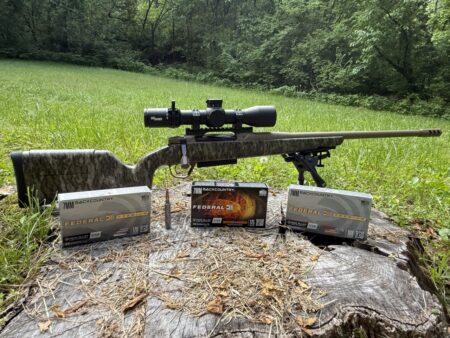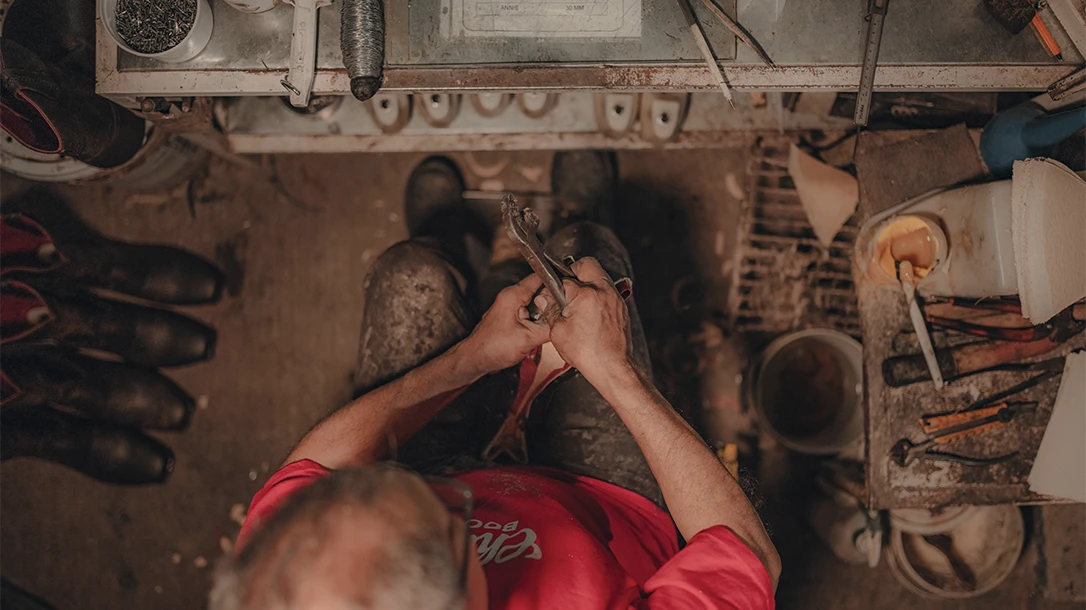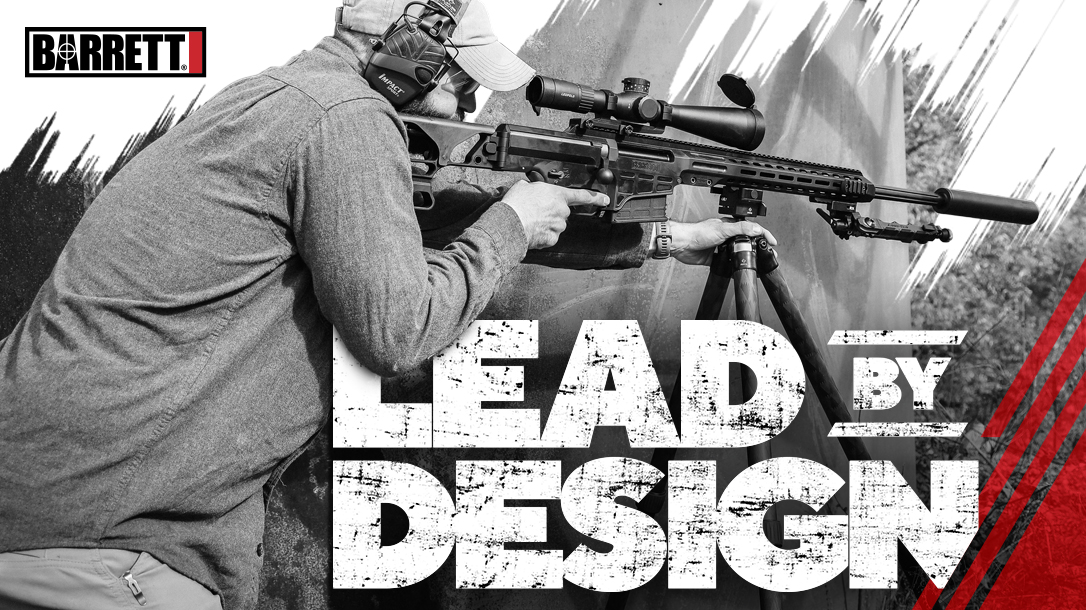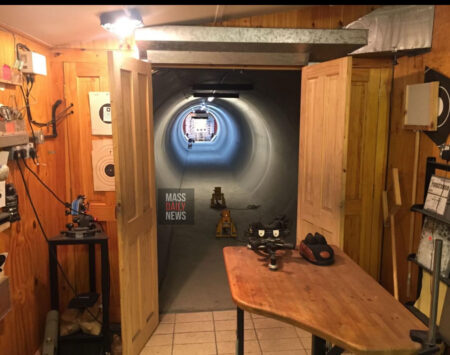Recently, I did some writing involving high-end handmade leather holsters–I think that wonderful new leather smell must have intoxicated me. Not only did I find a new appreciation for leather and leather goods, but it turned my attention to the beloved western boot, a staple in boots across many parts of the United States. More specifically, I wanted to gain a deeper understanding of the hallmarks of a classically crafted cowboy boot. I wanted the sole of the cowboy boot.
Understanding The Craft -The Sole of a Cowboy Boot
To do so, I met up with Will Roman, owner of Chisos Boots. Roman graciously spared some time to talk shop about boots. Chisos is a small, Texas-based independent bootmaker with a mission to offer a boot that relies on traditional, time-tested boot-making techniques without sacrificing quality or price. The company also prides itself on making the most comfortable cowboy boots.
Advertisement — Continue Reading Below
Because Chisos’ boots are handmade with traditional materials in the traditional way, they are exactly what I was looking for to scratch my leather-borne itch. Again, that leather aroma will lead you to strange places!
In a true Texas fashion, Chisos started when Roman took matters into his own hands. Other cowboy boots kept giving Roman back pain issues. As a result, he took it upon himself not only to learn about the craft of western boot making but also to tinker and design a better boot that could alleviate those problems. Those efforts led to the production of a small batch of his improved boots. It didn’t take long for that first batch to sell out. Then the second batch arrived and departed, followed by the third and so on. Now Roman sells his cowboy boots in Austin, Texas, for a living.
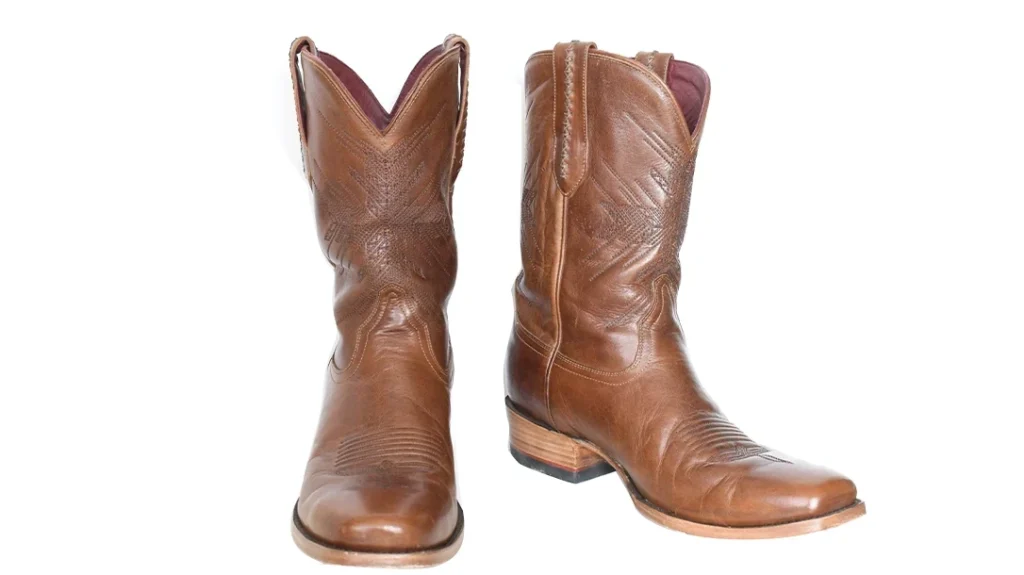
Advertisement — Continue Reading Below
Boots & 1911s Have More in Common Than You Think
As Roman explained it to me, Chisos sits in a market position between truly bespoke made-to-order products and mass-produced boots. Not being an expert in boots myself, I learned so much from our conversation. Roman added that a bespoke bootmaker might only have enough time to expertly craft about 20 pairs in a year. And that a major label might have the production capacity to crank out about 2 million pairs. As he explained this to me, I told him that the boot craft reminded me of high-end gunsmiths.
Throughout my conversation with Roman, I kept drawing parallels to 1911s. Comparing classic western boots to 1911s just makes so much sense to my gun-wired brain.
Chisos’ strategy is to produce about 2,000 pairs of boots every year. All pairs are hand-crafted while trying to “borrow” as many attributes found in bespoke-tier boots without crossing over that threshold in price or production time. To use another 1911-related metaphor, a Chisos boot is like buying a semi-customized 1911 from Wilson Combat’s catalog for a fraction of the price as opposed to waiting for Joe Chambers to build you one to your exact specifications. Not that Wilson’s guns aren’t expensive, because they’re definitely not cheap. But when Joe builds you a gun, its price is on a different level.
Advertisement — Continue Reading Below
The Chisos Catalog
To adhere to its strategy, the Chisos catalog covers the bases for both men and women. The company offers 12 different base pairs available in either cowhide or ostrich leather. Eight of its pairs are for men and four are for women. Additionally, the boots are sold with a few different color options. Chisos, of course, also offers roughout boots. Roughouts are practically mandatory since these are what working cowboys traditionally wear.
Styling-wise, Chisos offers round toes, snip toes, and square toes. Similarly, Chisos’ overall brand styling is quite classic. What I mean is that its products like the No. 1, No. 2, and No. 5 specifically have that “quintessential western boot look” to them. It’s not just their full leather construction, but also the proportions between the shaft, vamp, and outsoles. Sure, heels on western boots can vary by function, but the heel-stacks just have the right amount of slope to them. Chisos boots don’t really have a dramatic or gaudy over-the-top style.
The core product names are simple: No. 1s are round-toe boots, No. 2s are square-toe boots, and No. 5s are snip-toe boots. No. 3s and No. 4s are ladies’ boots. The No. 6s are Chisos’ interpretation of the roper. No. 7s are a fairly new side-zipper boot with a shorter shaft. The boots’ naming conventions follow Chisos’ order of product development. Coincidentally, Chisos borrowed it from the Texas tradition of labeling oil wells on one’s land in the order they’re tapped.
Advertisement — Continue Reading Below
The only boots in the catalog with a “regular” name are the King Ropers, one of the premium options made with ostrich leather. The decorative stitching found on Chisos boots’ shafts thematically varies with each model. No. 1s, for example, have a sun and moon motif, but No. 5s have a Texas Longhorn motif.
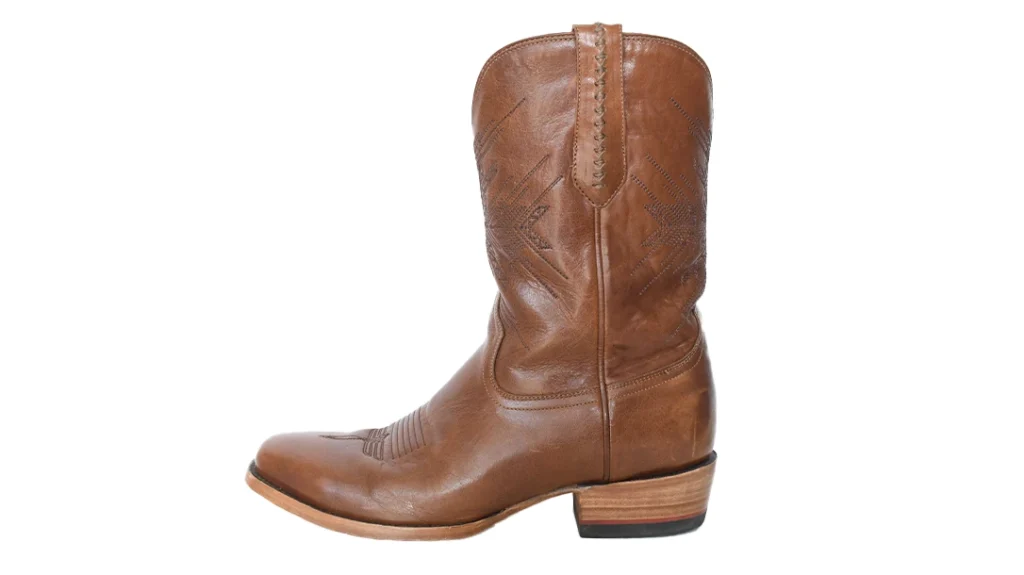
Made In Léon
All Chisos boots are made in Léon, Guanajuato, Mexico, which is one of the world’s most important leatherworking centers. When Roman founded Chisos, he spent time there apprenticing in the craft. Roman also sought out obscure volumes and references about boot making in the old traditions, not to mention that he spent countless hours researching the topic and learning everything he could about Western boots.
Advertisement — Continue Reading Below
Roman even told me that to this day, being a cobbler or leatherworker in Léon still carries a certain level of honor and prestige. And the most important factors in crafting a pair of boots by hand are the experienced human hands that bring them into existence.
In Roman’s own words, whereas most large-scale boot companies find ways to discreetly cut some corners and use fewer materials, Chisos actively adds more material.
Chisos Adherence to the Craft
Unless one’s an expert or cobbler, it can be hard to distinguish nicer boots from more basic ones by simply looking at them. Like 1911s, it is only by examining the parts that aren’t easily accessible that their true build quality can be revealed. What’s the difference between most $500 and $5000 1911s?
Advertisement — Continue Reading Below
Attention to Detail
Chisos boots easily pass muster with regard to all the touchpoints of classically fashioned western boots, including 100% leather soles. Of course, with their emphasis on being comfortable, the soles include separate layers for comfort, stability, and durability. Furthermore, the soles even incorporate a steel shank for added reinforcement.
And the boots’ heel-stacks are also 100% leather, including the rand. To save money, most modern boots’ rands are made from synthetic materials. Chisos heel caps (the bottom-most layer of the heel stack) are made from rubber for extra grip and protection, and all of them include a silhouette of the Lone Star State.
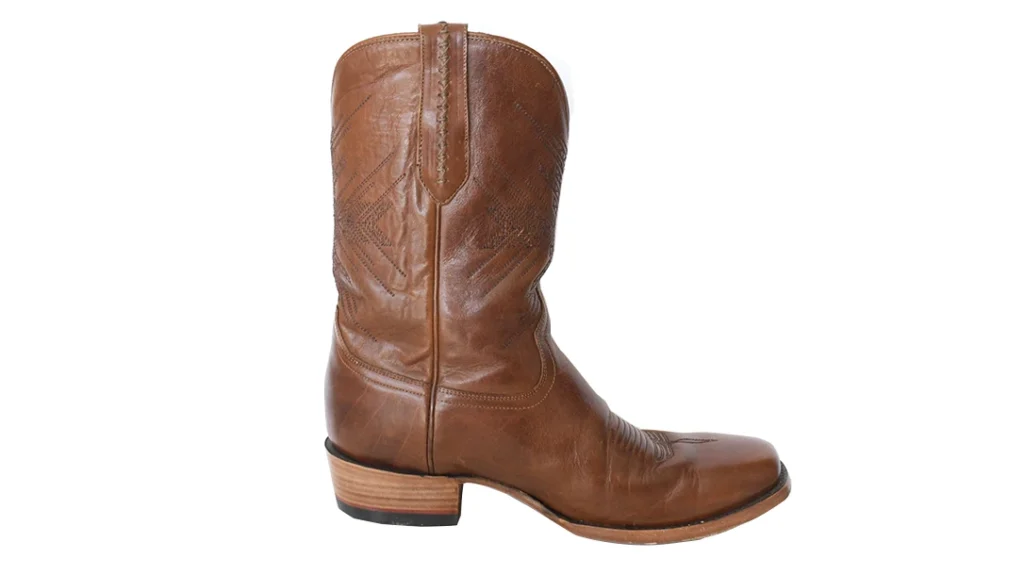
Boot’s Exterior
Chisos isn’t afraid of natural variations normally found across different hides of the same grades. The leather used to make a specific pair of No. 1s will not look exactly like the leather used to make the next pair, for example. I learned from Roman that many of the large boot-manufacturing concerns take the completely opposite approach. They optimize for uniformity across their entire production runs. Chisos does the opposite by embracing the nuances found across its leathers. After all, the draw for this style of boot is that it’s both traditional and handmade. Leather is an interesting medium precisely because it’s derived from living organisms.
While there’s technically nothing wrong with matching leathers uniformly, let me put it this way, for lack of a better way to say it: I think that in an era of synthetic materials and Gore-Tex (which can work rather well), the “organic” nature of such cowboy boots is one of the aspects that makes them special, interesting and timeless.
Fastening The Sole
Chisos’s addition of extra materials is evident in the interface between the sole and the rest of the boot. The front portion of the outsole counts on a Goodyear ¾ welt. Then, the boot’s mid outsole portion of the outsole between the front and the heelstack has not only the traditional rows of lemonwood pegs, but also a handful of brass nails.
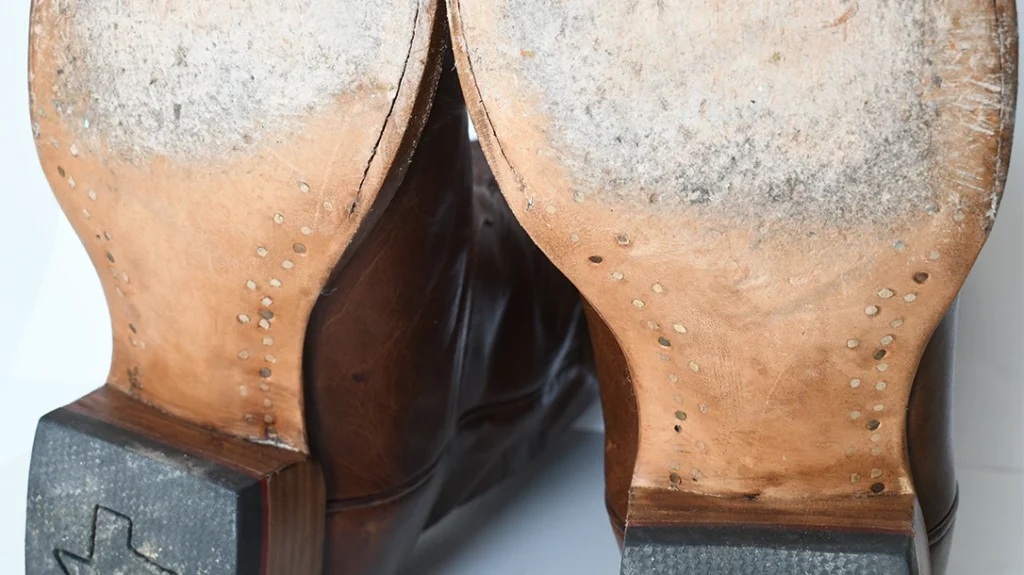
Both styles of fasteners work in tandem to bolster the boot’s overall construction. Lemonwood pegs are typically associated with higher-end western boots, and not so much the mass-produced variety. Lemonwood pegs are also interesting because they swell and expand with the sole since they’re also made from an organic medium.
The fact that Chisos outsoles are attached with brass nails and lemonwood pegs makes it possible for a cobbler to professionally re-sole and repair such boots as needed.
Sturdy Heel Counter
When it comes to footwear, heel counters are some of the most critical structures. They hold the rear of the boot or shoe together while also standing up to the wearer’s heel. They’re a major structural wear point in footwear, including western boots. Skimping on this structure can make or break a boot. Chisos’ heel counters are made from a thick slab of vegetable-tanned leather and then joined to the heel-stack with a very aggressive welt (footwear joinery) that’s reinforced by extra nails. Roman is quite proud of his heel counters because it was the first thing he showed me on a Chisos boot cut in half that he keeps for demo purposes.
Interior Of The Boot
Besides the rubber heel cap, the only other non-leather part found in these boots is their proprietary triple-density foam inserts, which do make for extremely comfortable boots. Chisos builds its boots from the ground up to accommodate these comfy inserts without limiting internal space around the toe area. To reduce odor and maintain consistency, the top portion of these inserts is also leather-lined with supple dairy-cow leather.
The rest of the boot’s interior, from the shaft to the toe, is also lined with this supple oil-tanned leather, distinctively dyed purple. The only exception is the heel counter, which is technically a separate structure and made from thicker leather anyway. Many boots, even some with “big names,” do not have uniform interior linings. These boots will change and switch up interior liner leathers depending on what is and isn’t visible.
All western boots have a pair of vertical seams on either side of the shaft. Their job is to join the leathers that give form to the shaft itself. As a rule of thumb, quality boots include smooth seams that are rolled over into each other in order to avoid a “ridge” of material that can irritate the wearer’s ankle. Chisos construction adheres to this.
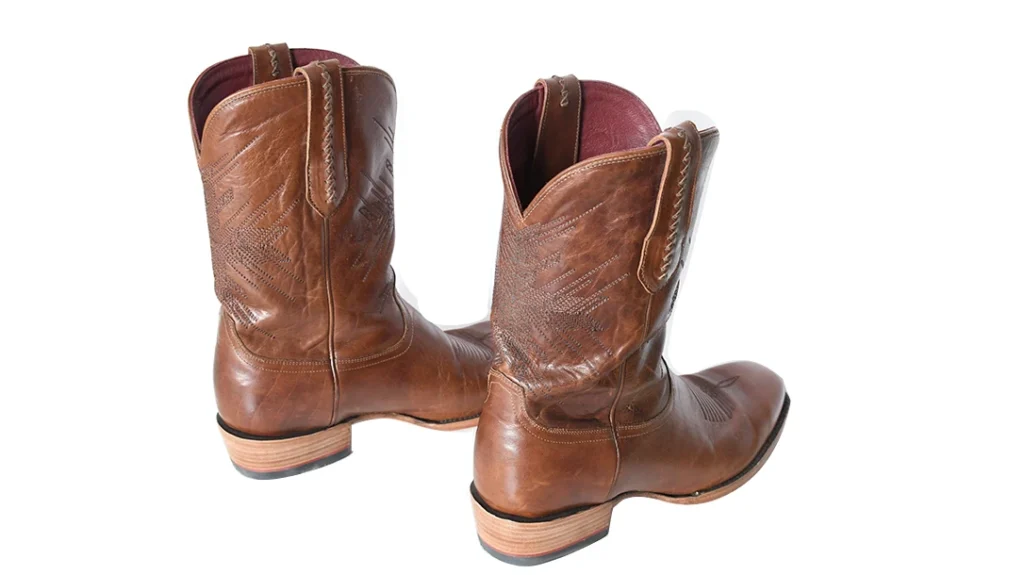
A Month Is Hardly Any Time
While visiting Roman at the Chisos HQ in Austin, TX, I ended up purchasing my own pair of Chisos boots–the ones in the title photo. After trying these No. 2 Whisky boots on, I noticed how comfortable they were and how well they fit. I succumbed to temptation and walked out wearing my new pair of Chisos No. 2s. Keep in mind, I walked into Roman’s shop wearing my well-worn pair of Noconas that I’ve had for a minute. Even brand new, the No. 2s were noticeably more comfortable, no doubt due to that extra-cushy insert it comes with. At the time of this writing, it has been nearly a month, and my No. 2s are just about broken in.
I reached out to Chisos because I was captivated by its origin story, with Roman going out of his way to make the cowboy boots he wanted. While Chisos’ styling is conservative in profile and shape, it speaks to me. In the case of the square-toe No. 2s I took home, I really like the traditional sloped angle found on Chisos’ heel stacks. Once again, the angle isn’t too severe or exaggerated–it looks just right to me. Not to mention, the Chisos square toe profile isn’t completely blunt like a wadcutter bullet. No. 2 toes are somewhat rounded, and this subtly stands out compared to other square-toed boots on the market.
The Sole of a Cowboy Boot
In short, western boot enthusiasts now have access to a company that offers proper cowboy boots for an objectively reasonable price. Don’t take my word or even what Chisos says on its own website either.
As for me, I think I’ll save up for a pair of black snip-toe No. 5s.
For more information, visit Chisos Boots.
WHY OUR ARTICLES/REVIEWS DO NOT HAVE AFFILIATE LINKS
Affiliate links create a financial incentive for writers to promote certain products, which can lead to biased recommendations. This blurs the line between genuine advice and marketing, reducing trust in the content.
Read the full article here
